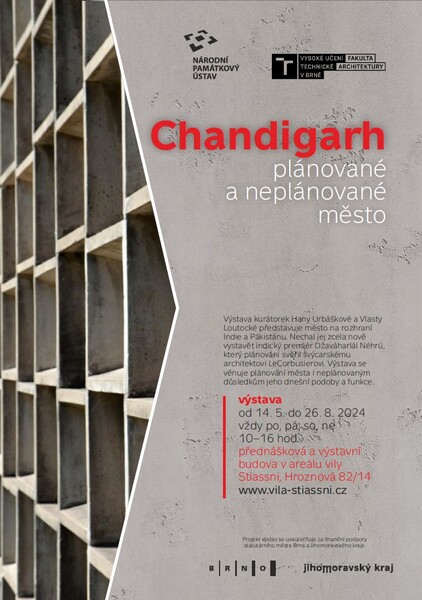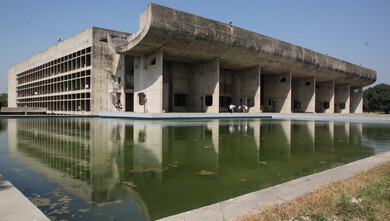The latest exhibition at Villa Stiassni showcases Chandigarh - the planned and unplanned city

The National Heritage Institute, Methodological Centre of Modern Architecture in Brno together with the Faculty of Architecture of the Brno University of Technology has prepared an exhibition in its lecture and exhibition building for the period from 14 May to 26 August 2024 dedicated to Chandigarh, India, which was realized in the last century as an "ideal city" according to the basic principles of urbanism as put forward by the Athens Charter.
Chandigarh was built at a pivotal and exceptional moment in Indian history. It is the first planned city in India after independence from British rule in 1947. The city was planned as the administrative headquarters of the states of Haryana and Punjab and primarily intended for civil servants, politicians and soldiers. The idea for the new capital was conceived by the Indian Prime Minister Jawaharlal Nehru, who in 1949 commissioned the American architect Albert Mayer to design India's 'City of Tomorrow'. Mayer's urban design concept was taken up by Le Corbusier and adapted its organic shape into a rectangular form composed of rectangular sectors. Le Corbusier worked with Jane Drew, Maxwell Fry, and his cousin Pierre Jeanneret on the final design, which follows the basic principles of urbanism as put forward by the Athens Charter. Since its inception, Chandigarh has occupied a prominent position in the Indian and international architectural field as a great experiment in modern urbanism and architecture. On 17 July 2016, the Capitol complex of government administrative buildings was inscribed on the UNESCO World Heritage List.
"The exhibition showcases contemporary Chandigarh, which is an example of how, despite the 'ideal urban plan', cities can face a number of challenges and problems associated with growth, urbanisation and modernisation. The notion that a city can be planned as a definitive beautiful image for an educated and 'humanised' population remains a utopia. Despite all the problems and differences between the projected dream and the reality of the present city, Chandigarh is rated by the locals as the best place to live. Paradoxically, it is this positive assessment that causes the city to show signs of immense stress due to ever-increasing population pressure, a rapidly changing class structure, and an ever-increasing number of unplanned and unforeseen physical and economic activities that it is unable to adequately cope with," add Hana Urbaskova and Vlasta Loutocká, curators and authors of the exhibition. The expert guarantor of the exhibition is architect and architectural historian Vladimír Šlapeta.
The exhibition consists of 22 panels and several photographs briefly presenting the history of the city's creation, but mainly mapping the life of contemporary Chandigarh in the context of Le Corbusier's Master Plan.
The opening will take place on 14 May 2024 at 5 pm and will be accompanied by a lecture by curators Vlasta Loutocka and Hana Urbášková.








